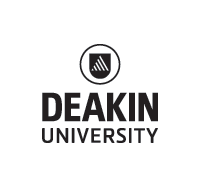HDS734 - Inclusive Design and Technology
Unit details
| Year | 2026 unit information |
|---|---|
| Enrolment modes: | Trimester 2: Online |
| Credit point(s): | 1 |
| EFTSL value: | 0.125 |
| Unit Chair: | Trimester 2: Valerie Watchorn |
| Prerequisite: | Nil |
| Corequisite: | Nil |
| Incompatible with: | Nil |
| Educator-facilitated (scheduled) learning activities - online unit enrolment: | Online independent and collaborative learning activities including weekly 90 minute online seminars. |
| Typical study commitment: | Students will on average spend 150 hours over the teaching period undertaking the teaching, learning and assessment activities for this unit. This will include educator guided online learning activities within the unit site. |
Content
Innovative technologies and designs play an essential role in building an inclusive society. This unit will challenge students to consider what is possible in inclusive technology and design, with a specific focus on people with disability. In this unit, students will explore how assistive and mainstream technologies are designed, appraised, hacked and implemented to produce meaningful inclusion outcomes. The unit will address how people with disability use and experience mainstream technologies, and will also introduce students to a range of specialized assistive technologies including augmentative and alternative communication, computer access, environmental modifications, and wheeled mobility.
Using a problem-based learning approach, students will develop broad knowledge of design theories such as Universal Design, Inclusive Design, and Design Thinking. They will also develop techniques for consulting and co-designing with diverse populations. The practical tasks in the unit will guide students as they design and prototype a tailored technology solution for an individual with disability.
Learning outcomes
| ULO | These are the Unit Learning Outcomes (ULOs) for this unit. At the completion of this unit, successful students can: | Alignment to Deakin Graduate Learning Outcomes (GLOs) |
|---|---|---|
| ULO1 | Critically analyse the value and application of assistive technologies, inclusive design, and universal design, for the inclusion of people with disability in contemporary society. | GLO1: Discipline-specific knowledge and capabilities |
| ULO2 | Apply inclusive and universal design principles and source relevant evidence to evaluate the impact of mainstream and assistive technologies for end-users. | GLO1: Discipline-specific knowledge and capabilities |
| ULO3 | Critically analyse the extent to which established policies, legislation, and models of practice promote the inclusion of people with disability in contemporary design processes and products. | GLO1: Discipline-specific knowledge and capabilities |
| ULO4 | Demonstrate the skilled application of design thinking techniques and mindsets to the design and evaluation of authentic technological solutions that overcome barriers to inclusion. | GLO2: Communication |
| ULO5 | Understands and engages in respectful, inclusive, professional, and reflective practices for consultation and co-design across a range of settings. | GLO2: Communication |
Assessment
| Assessment description | Student output | Grading and weighting (% total mark for unit) | Indicative due week |
|---|---|---|---|
| Assessment 1: Collaborative online design thinking practice | 1000 words | 20% |
|
| Assessment 2: Design brief and problem statement | Written submission 2000 words | 40% |
|
| Assessment 3: Design pitch | 15 minutes | 40% |
|
The assessment due weeks provided may change. The Unit Chair will clarify the exact assessment requirements, including the due date, at the start of the teaching period.
Learning resource
The texts and reading list for HDS734 can be found via the University Library.
Note: Select the relevant trimester reading list. Please note that a future teaching period's reading list may not be available until a month prior to the start of that teaching period so you may wish to use the relevant trimester's prior year reading list as a guide only.
